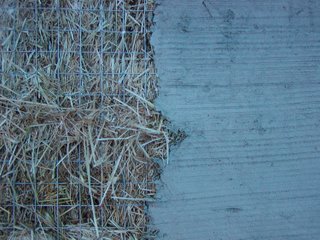
===========================================
As always, we appreciate your response. We finally ordered the lime,
it is arriving this morning. We are scheduled to start tomorrow. Just
lining everything up today. Some final technical questions.
In the formula you call for 4 different grains of sand. In my local
Home Depot I can only find “play sand” and “Masons Sand. I suppose
I’ll have to go to a better source to find the variety of sand. When
I do, what is the proportion of different sands that I need? Probably
this information is on the video, yes?
I have purchased a large mixing tub from a masons supply house
thinking this would be ok to slake the lime/sand mixture in. The
after thought was that you had suggested creating a troff with 6 mil
plastic. The question is, do I have to slake all the lime/sand
mixture over night? It would make sense in this case to have the
large troff constructed. If on the other had I can mix in batches
then I would rather not build the troff and mix in the large tub.
Thanks again,
Harry
===========================================
Here’s my response:
You do not have to slake the lime at all if you don’t want to. It makes a better plaster if you do, but will be absolutely fine if you do not. Just be sure to mix for a minimum of 20 minutes before you use the material. If you do slake the lime, you will want a fairly big trough to put it in as a single mortar mixer load produces a lot of mud. If you plan to slake all the plaster, then you will need to hold at least four or five mortar mixers full at one time for 24 hour slaking.
The sand itself can be play sand as long as the sand is not washed. The same is true for mason’s sand. The key is that you have at least four different size grains of sand. The scratch and brown should be fairly coarse sand and the final coat should be fine sands. I think most of the sand at Home Depot will be washed and graded and therefore no good for you. You can call sand supply yards and ask for their play sand and confirm the washing/grading as mentioned above. The mixing ratio of the grains is not that crucial; however, an even mix ratio is great if it can be achieved.
Good luck.



6 Responses
Thanks for this information. I like the fact that you not only answered the guy who asked the question, but posted it for the rest of us too. Thanks for sharing the knowledge! Oh, and yes, this is worth a beer! Considering the time and back pain you just saved me…!
Question: I have herad many comments in regards to rodents and insects. Would it help in any way to sprinkle cedar shavings between the bales as they were layed? Doesn’t cedar act as a natural repellent to insects and rodents ? Please let me know your thoughts.
Tim,
There has been a lot of talk about pests in recent days here on this blog and in other arenas due to one owner’s comment. That said, bugs are really not a big issue in most straw bale homes. I want to be really clear about this. In over ten years, I have never had a house infected with bugs in any way. To answer your question, if you feel it necessary, you could sprinkle cedar or use borax on th ebales as a pest inhibitor.
Andrew have you had any experience with type SA lime (air entrained lime)? I’ve heard that it is being used by some folks up in Canada on straw bale structures with good success. As soon as the weather cooperates I’ll be moving forward with plastering the exterior of our straw bale home and I’m still looking options for our lime plasster.
NHL is out of the question due to cost. I have considered adding Metakaolin to the Type S lime, but I’m not clear on how much it would take (its not cheap either). I’ve toyed with just adding it at a rate of 1/20 with the lime to see if that adds any significant strength. If brick dust works at 3%, shouldn’t a much better pozzolan like metakaolin work at a lower ratio?
At any rate, the Type SA lime is an interesting option. Its a little more expensive than Type S, but nothing close to the cost of NHL. Thanks for any input you might have.
Bob
Hi Bob. I have not used type SA lime and can’t speak to how it would work. Would it still require slaking? I imagine so. I have used type S lime in Australia quite a bit and I find that as long as it is properly slaked, it works very well. It is VERY caustic to the eyes, skin, and other mucous membranes, much more so than NHL, but that’s nothing a good pair of goggles and other bodily protection can’t handle.
I would love to hear more about type SA from anyone who has experience or from you, Bob, if you choose to move forward. Perhaps you can share some links to other projects where it has been used. I would like to learn more about it as I recognize that NHL is too pricey for some people and it is always a good thing to have available options when building.
I would agree that a powerful pozzolan should be capable of working at a lower percentage. I’ll be interested to hear what you discover on that front as well.
NHL lime is a very hard drying lime even if you get the2.5. Lime putty and a washed sand with a metakaolin 25% of the lime is my preferred mix. NHL is better used for cappings and applications that get big weather exposure. Background is important.